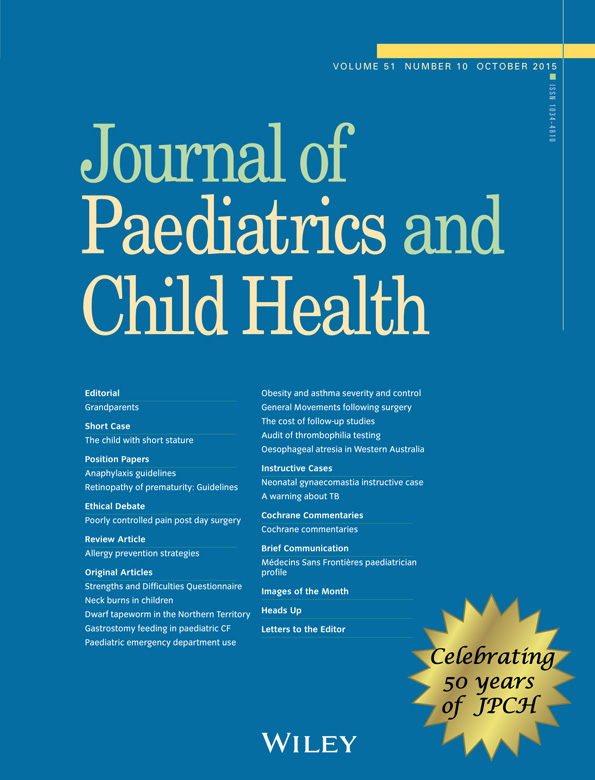Dwarf tapeworm (Hymenolepis nana): Characteristics in the Northern Territory 2002–2013
Abstract
Aim
Review of dwarf tapeworm (Hymenolepis nana) presentations to Northern Territory (NT) Government health-care facilities over 12 years. We postulated H. nana infections would remain unchanged despite the introduction of deworming programmes as H. nana is not eradicated with albendazole treatment.
Methods
A retrospective observational analysis of consecutive microbiologically confirmed cases of H. nana identified by NT Government health-care facilities between 2002 and 2013.
Results
Four hundred sixty-one episodes of H. nana infection were identified over the 12-year period from 68 387 faecal samples. Infections were overwhelmingly in young children with a median age of patients being 3.0 years (interquartile range 2.25–4.67). Patients were predominantly Indigenous (98.9%, P = 0.001) and infections occurred across the entire NT. Infections were associated with anaemia (18.2%) and eosinophilia (39.6%). The annual prevalence of NT Government health-care facility diagnosed H. nana infection remains relatively constant from 6.9 {4.8–9.0 (confidence interval (CI))} cases per 10 000 Indigenous population in 2002, compared with 6.6 (4.7–8.4 CI) cases per 10 000 Indigenous population in 2013. Infection rates in Indigenous children <5 years of age were: 46.1 (16.4–75.8 CI) cases/10 000 in 2002, compared with 44.3 (15.3–73.3 CI) cases/10 000 Indigenous population in 2013.
Conclusion
H. nana is the most frequently identified cestode (tapeworm) in NT Government health-care facilities. H. nana remains endemic throughout the NT, predominantly infecting Indigenous children less than 5 years of age.




